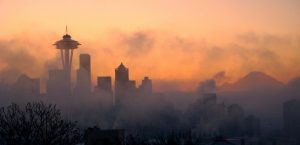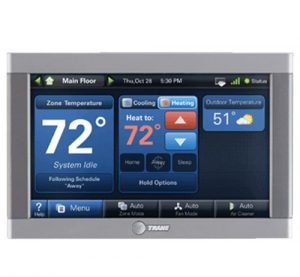It takes a lot to keep your home warm and toasty all winter. Your heating system has various components that require proper maintenance, such as routine cleaning.
Missing a tune-up or two isn’t the only thing detrimental to your heating system. We can sometimes overlook the need for a thorough cleaning and its benefits.
Furnace heat exchangers are probably the most important components in your heater. Heat exchangers have expansive responsibilities to alter temperatures, but they include the following:
- Extract heat particles
- Transfer heat to a designated medium (moisture or water)
- Distribute indoors (to your home’s airflow or water supply)
Considering the large part the heat exchanger plays in your entire furnace, a cracked heat exchanger can effectively hinder or halt the entire heating process.
Here’s how you can tell if your furnace has a cracked heat exchanger.
Do You Have Cracked Heat Exchangers?
The air passing through the furnace heat exchanger doesn’t typically make audible noises. If you hear any, your furnace may have even more problems than a cracked heat exchanger.
In contrast, how do you know if it’s due to a heat exchanger instead of air filters and other components?
A damaged heat exchanger affects your home in more obvious and subtler signs. Knowing what signs to look for can help prevent problems from worsening, even saving your family from hazardous exposure.
Dangers of a Cracked Heat Exchanger
What makes a cracked heat exchanger dangerous isn’t its potential to hinder your heating. A cracked heat exchanger poses risks to your health and safety due to the elements it houses.
Stress cracks in your heat exchanger are vastly different from a clogged air filter. Once your furnace has a cracked heat exchanger, various gas emissions are released into its surrounding environment.
Besides water vapor and soot, your whole furnace houses various elements. Heat exchangers potentially produce fumes like Carbon monoxide (CO), carbon dioxide (CO2), sulfur dioxide (SO2), and nitrous oxide (N2O).
A furnace typically burns fossil fuels to generate heat, producing fumes. Hazardous emissions are directed into pipes to rid your home of flue gases safely. Unfortunately, exhaust pipes are only found at the end of furnace burners.
Potentially the most dangerous gas leaking into your home is carbon monoxide. Homeowners often integrate a carbon monoxide detector to help alert them to any leaks.
Here are some things you should know about a CO leak.
Carbon Monoxide Leak
CO isn’t always present in every heating system. However, you may be exposed to various carbon emissions if you have charcoal, fuel oil, wood burning, propane, or another natural gas furnace.
CO doesn’t look, smell, or taste like anything. You may be unable to tell through taste, odor, sound, or sight if CO makes it into your airflow.
While you can’t always trust your senses, there are some ways to tell if it’s in the air.
It’s translucent.
CO may be transparent, but it isn’t invisible. When CO is exposed to open air, it reflects light and presents different colors.
Natural gas typically appears in blue, purple, green, and yellow streaks. There may be a gas leak if you see a rainbow glare around your doors, windows, and tabletops that doesn’t flow as light as air.
It’s chappy.
CO doesn’t taste like anything, and even if it did, would we know what flavor should set off the alarms? Like any good souffle, the trick to it lies in the texture.
The air won’t taste like anything, but it will feel like something. The air may feel chapped or dry. In high levels, CO in the air may feel suffocating, making it harder to breathe as you inhale more contaminated air.
Health and safety risks of carbon monoxide leaking into your home
A carbon monoxide detector is imperative to avoid the dangerous effects of heat exchanger cracks. It can help you salvage your natural gas furnace, preventing house fires and health hazards.
Here are some symptoms you can expect if your home or the residence you are staying in has a CO leak.
Symptoms of Carbon Monoxide Poisoning
A cracked heat exchanger poses mild to severe risks. High-level exposure to hazardous emissions may lead to symptoms including but not limited to the following:
- Dry mouth
- Itchy throat
- Sore eyes
- Headache
- Nausea
- Dizziness
- Drowsiness
- Skin rashes
- Runny nose
Mild symptoms can occur from chronic or acute exposure to low levels. If you experience flu-like symptoms, including vomiting and fever, you may be exposed to high levels of CO. You can go to the ER or ask for a second opinion, but you should do something about the heat exchanger crack first.
What You Can Do About a Cracked Heat Exchanger?
Upgrading to a safer yet more sustainable new furnace is advisable. Still, the heating season may rack up utility bills due to a cracked heat exchanger.
Whether you have a conventional gas furnace or an innovative new heating system, routine maintenance and regular tune-ups will keep the doctor away.
Remember, the heat exchanger doesn’t only pose health risks but may affect your safety and finances. It’s best to schedule maintenance checks with an experienced professional.
Here are some ways to tell if your furnace has heat exchanger cracks.
Signs of a Cracked Heat Exchanger
Depending on how long your furnace has cracked heat exchangers, there may be a noticeable amount of CO in the air. Above you will find ways to tell if there’s CO in the air.
If you notice the presence of CO, inspect your other gas burners for any leaks. However, if your furnace is the only appliance with a heat exchanger, you can safely assume it’s your heating system.
Additionally, you may feel it in the air: as in you may have the furnace running all day without feeling any additional warmth.
No heat will come from the furnace if there’s a significant crack or hole in the heat exchanger. The furnace will distribute no heat into your duct work, and winter weather will have no trouble dropping indoor temperatures.
However, normal wear and tear may include stress cracks on the furnace heat exchanger. If there are only minor scrapes and abrasions on the heat exchanger, your furnace may only struggle to facilitate heat and airflow.
While there won’t be a drastic lack of heating, homeowners may notice spiking utility or energy costs. Due to your furnace’s struggles, various components may overcompensate, causing surges in both utility and electricity consumption.
It’s best to reach out to an HVAC professional upon noticing any unusual activities from your furnace.
Can I Fix a Cracked Heat Exchanger?
If you have a background in handling HVAC equipment, especially furnaces, you may just pull off a heat exchanger repair. Remember: please handle all your furnace equipment with the utmost care.
Metal, flame, fuel, and heat make a volatile mix. All that heat comes from a sophisticated configuration of delicate components. It is risky to conduct a furnace tune-up on your own, especially when there are already cracks in the heat exchanger.
Is It SAFE for Me to Handle a Cracked Heat Exchanger?
Any repair involving replacement should be left to professionals. You can still replace some parts of the furnaces by yourself.
Clogged filters aren’t typically a big deal, and you may replace them using minimal tools. All you need is the right unit to replace your clogged filter, and you are practically all set.
However, cracks in a burner or corrosion in coils is a different story. You may scrub off corrosion on any metal, but too much pressure using rough sandpaper may cause more damage.
You might even cause cracks in the heat exchanger or other parts of the furnace system. Call a professional if you have no experience cleaning, repairing, or replacing the furnace heat exchanger.
Handling Cracked Heat Exchangers
Handling a heat exchanger requires proper safety equipment, including fire-retardant suits, gloves, protective goggles, and carbon masks.
Depending on the severity of your cracked heat exchanger, don’t panic if someone shows up in a HAZMAT suit. Some companies send technicians in full gear for inspections. However, these are for more extreme cases.
Calling in the pros for cracked heat exchangers may involve a few steps. After the initial inspection, they may give you a complete evaluation and estimate before repairing the heat exchanger.
A technician may wear a carbon mask during the inspection to test your Indoor Air Quality (IAQ) for CO and CO2 using a combustion analyzer. The initial process may give professionals enough insight into the severity of your case to build a case evaluation.
Looking for Reliable Furnace Repair in Washington?
While an HVAC technician from an honest company may repair and replace your cracked heat exchanger efficiently, it’s best to discuss your entire furnace situation.
There may be other problems lurking underneath the cracks in your heat exchanger. If you need reliable furnace services in Washington, don’t waste time searching for solutions.
Call BelRed Energy Solutionsfor a heating system or heat pump repair.
BelRed Energy Solutions
Is your heating system overheating? Is there a crack in your heat exchanger? Is your flame light flickering?
Don’t get shut out of a cozy winter due to a faulty HVAC system. The most trusted HVAC company in Washington is one call or tap away!
Book BelRed Heating | Cooling | Electrical | Plumbing services in Mukilteo, WA, online today.







